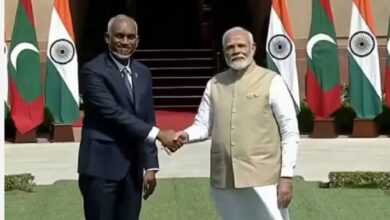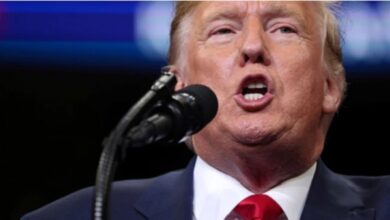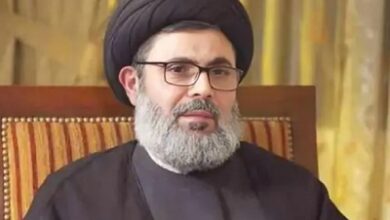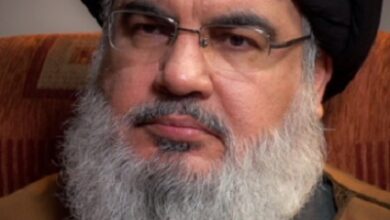Two years later, in May 2008, the US-backed Lebanese government threatened to shut down Hezbollah’s telecommunication network. This led to violence between Hezbollah and government supporters. Seeing this, the government backed down and agreed to a deal mediated by Qatar. After several meetings, Hezbollah was allowed to veto the decisions of the Lebanese cabinet.
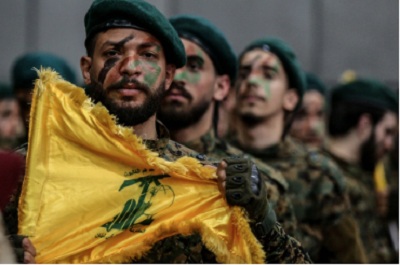
Date- 17 September, Time- 3:30 in the afternoon. Explosions started happening one after another in Lebanon, which continued for about 1 hour. The method of these explosions was not common, for the first time in history blasts were taking place in pagers.
According to media reports, the aim of these blasts was to kill 4,000 Hezbollah fighters, whom Israel considers its enemy, in a few minutes. 12 people died in this attack while thousands were injured.
Hezbollah was still recovering from the blasts on its communication system when the next day, on the evening of September 18, explosions started in their walkie-talkies. 25 more people were killed in the attack. 37 were killed in both incidents.
After two days of continuous attacks, Hezbollah chief Hassan Nasrallah has vowed to take revenge from Israel. In a speech given on the evening of 19 September, Nasrallah said, “I will not mention the time, place and method of the retaliation, but Israel will definitely get an answer.”
Why is Israel after Lebanon in the midst of the Gaza war? Who is Hassan Nasrallah who vowed revenge after Israeli attacks?
After Gaza, Israel’s eye is on Lebanon border
There are currently 2 major reasons for the dispute between Lebanon and Israel…
- Israel’s intrusion into Gaza: Hamas attacked Israel on 7 October. Within 30 days, the Israeli army entered Gaza, and since then, Lebanon has been attacking Israel. More than 60,000 Israelis living near the Lebanon border had to leave their homes. They have not been able to return to their homes for almost a year.
- Death of Hamas’s Haniyeh, Hezbollah commander Fuad Shukr: 3 months ago on 30 July, Hezbollah’s top commander Fuad Shukr died in an Israeli airstrike. The very next day, Hamas chief Ismail Haniyeh was killed in Iran. After both the deaths, a situation of confrontation arose between Lebanon and Israel. Then suddenly Israel attacked Lebanon with 100 fighter jets. Israel said that it feared an attack from Lebanon, so it attacked in advance. To take revenge for the sudden attack, Hezbollah also fired 320 rockets on Israel.
-
Why did Israel attack now?
According to Al Jazeera, the war that has been going on for a year in Gaza is now in its final stage. Haniyeh and Mohammad Daif, who planned the 7 October attack, have been killed. In such a situation, Israel is now moving towards Lebanon. On September 16, a day before the pager attack in Lebanon, the Israeli Prime Minister added another objective to his objectives in the war. Netanyahu said-
I have said this before and I am saying it again, I will ensure that the people who have been rendered homeless at the Lebanon border are brought back
Israel’s Defense Minister Yoav Galant had also announced that they are shifting their focus from Gaza to Lebanon. In such a situation, by attacking Lebanon, Israel is trying to put Hezbollah on the back foot so that their 60 thousand people can go back to their homes near the Lebanon border.
However, Hezbollah’s chief commander has clearly stated in his speech that until Israel leaves Gaza, they will continue to attack the Lebanon border. They will not let the Israelis return home.
Know who is this Hassan Nasrallah, why does he have so much influence in Lebanon…
Born in a poor family, left home during the civil war
Hassan Nasrallah was born in 1960 in a poor Shia family and lived in Sharshabuk area of Beirut, the capital of Lebanon. He was interested in religious matters since childhood. He was greatly influenced by Imam Sayyed Musa Sadr, who was born in Iran. Sadr started the ‘Movement of Deprived’ in 1974 to strengthen the Shia community of Lebanon. In Lebanon, it was known as ‘Amal’.
In 1975, a civil war broke out in Lebanon. Sadr started the armed wing of Amal to protect southern Lebanon from Israeli infiltration. It was named the Lebanese Resistance Brigade. Then 15-year-old Nasrallah also joined Amal. When the civil war became fierce, Nasrallah’s family moved to their ancestral village Bajourih.
In December 1976, Nasrallah moved to the Iraqi city of Najaf to study at a Shia seminary (hawza). Here he met the Lebanese scholar Sayyed Abbas Musawi. In early 1978, the Iraqi Baathists’ crackdown on Shias forced Nasrallah and Musawi to return to Lebanon. Musawi founded a religious seminary in Baalbek, Lebanon, where Nasrallah continued his studies.
Nasrallah and Musavi, who had become leaders of the party by 1979, supported Imam Ruhollah Khomeini during the Islamic Revolution in Iran, which led to the establishment of the Islamic Republic of Iran.
Israel waged war against Lebanon, Hezbollah was formed
Three years later, in July 1982, Israel invaded Lebanon to avenge the assassination of its ambassador to London, Shlomo Argov. After besieging Beirut for 10 weeks, Israel occupied Lebanon in September. 20,000 people died in this, including many Palestinians.
To deal with the impact of the attack, Lebanese President Elias Sarkis formed a National Salvation Committee. Amal leader Nabih Berri and Lebanese Forces leader Bashir Gemayel also joined the committee.
But Nasrallah and Musawi, members of Amal, did not do so. They accused Amal of betraying them. In 1982, those who broke away from the organization formed Hezbollah with the support of Iran and Syria.
After its formation, Hezbollah started a guerrilla campaign against Israel in Lebanon. Hezbollah said that through this campaign it is writing a script to liberate Palestine from Israel. Apart from attacking Israeli soldiers and military bases, Hezbollah also started suicide attacks.
Hezbollah’s suicide attacks against Israel Meanwhile, in November 1982, a suicide attack took place on the Israeli military headquarters in the Lebanese city of Tyre. In this, 75 Israelis and 20 others, most of whom were prisoners, died. Hezbollah did not stop here. In April 1983, a bomb exploded at the American embassy in Lebanon. In this, 17 Americans and 30 Lebanese died.
The US embassy was moved and about a year later its new location was also attacked. Meanwhile, the US Marine barracks and French military bases in Beirut were also attacked, in which more than 300 soldiers were killed. Hezbollah did not take responsibility for the attacks but it supported them.
Due to persistent attacks, the Israeli army withdrew from most of South Lebanon by 1985. However, it retained control of several communities near the border. Hezbollah continued to attack Israeli targets in the name of creating a security zone in Lebanon.
That same year, militants from a Shia group in Lebanon hijacked TWA Flight 847 from San Diego to Beirut. One passenger was killed, and Israel had to free 700 Lebanese-Palestinian prisoners in exchange for the release of the other 152. Hezbollah once again did not take responsibility for the plane hijacking, but it supported it.
Nasrallah then became the head of Hezbollah’s executive council in 1985. During this time, he often consulted with Supreme Leader Khomeini in Iran. Former Iranian general Hussein Hamedani has stated in his memoir that Nasrallah was tasked with formulating policies for Syria and uniting Iran’s allies in Iraq after the death of Qasim Suleimani.
Nasrullah became the chief of Hezbollah, drove Israel out of Lebanon
In February 1992, Hezbollah chief Musawi, his wife and child were killed in an Israeli airstrike. At his funeral, Nasrallah said, “Even if we are murdered, even if bombs are dropped on our heads in our homes, we will not retreat from our fight.”
After Musawi, the command of Hezbollah came into the hands of Nasrallah. Under his leadership, the organization acquired rockets capable of long-range attacks. Through this, it became easier for Hezbollah to attack northern Israel. In 1992, under the leadership of Nasrallah, Hezbollah contested parliamentary elections for the first time and won 12 seats. With this, the organization also became politically active in Lebanon.
Of all the armed organizations that have raised their voice against Israel so far, Hezbollah has proved to be the biggest challenge. Since the organization came into existence in 1982, not a single year has passed without a clash between Israel and Hezbollah.
In May 2000 Israel completely withdrew from southern Lebanon. This was the first time it had left an Arab territory without any treaty. This was the biggest victory for Hezbollah in Lebanon so far. There was an atmosphere of celebration throughout the country. Just a day later, on 26 May 2000, Nasrallah reached Bint Jbeil, a small town in Lebanon, a few kilometers from the Israeli border.
“Even though Israel has nuclear weapons, it is still as weak as a spider web,” said Nasrallah, 39, dressed in brown clothing and a black turban.
In July 2006, Hezbollah took two Israeli soldiers hostage during an encounter. Then once again Israel attacked Lebanon. In this war that lasted for 33 days, Hezbollah emerged as the strongest military force of Lebanon, which could protect the citizens of the country.
Hezbollah fired 4 thousand rockets during the war. During a speech on 14 July 2004, Nasrallah asked the people of Beirut to look towards the west. At the same time, Hezbollah fired a missile at the Israeli naval ship Hanit in the Mediterranean Sea. Many people were killed in this attack.
Due to the constant challenge to Israel, the popularity of Hezbollah and Nasrallah increased a lot in Lebanon. However, he came under the radar of Israel. Due to this, he reduced his speeches in public places. Now most of Nasrallah’s speeches are pre-recorded.
Hezbollah’s entry into politics, right to veto government decisions
Nasrallah started building the image of Hezbollah in the country to gain a foothold in Lebanese politics. He gave direct support to the country’s largest Shia community. Nasrallah did many such social welfare works in the name of Hezbollah, which the Lebanese government could not do.
Under Nasrallah’s leadership, Hezbollah built many schools, hospitals and charity organizations. After the war with Israel, in December 2006, Hezbollah demanded a share in the government of Lebanon and the removal of the US-backed government of Fouad Siniora from the country. Thousands of people camped in Beirut and demonstrated in support of Hezbollah.
Two years later, in May 2008, the US-backed Lebanese government threatened to shut down Hezbollah’s telecommunication network. This led to violence between Hezbollah and government supporters. Seeing this, the government backed down and agreed to a deal mediated by Qatar. After several meetings, Hezbollah was allowed to veto the decisions of the Lebanese cabinet.


